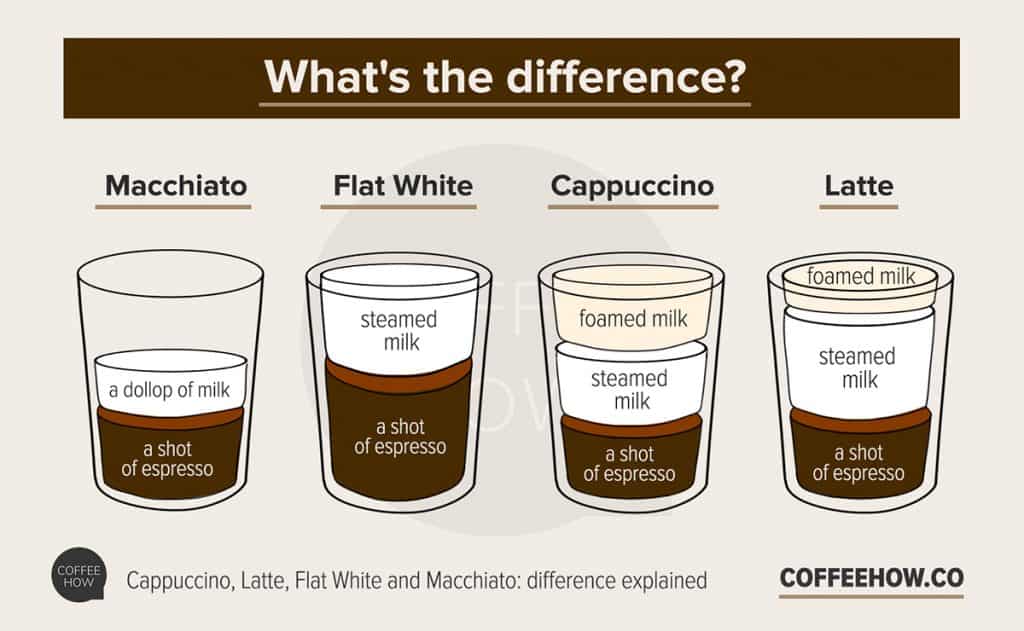

In other words, a wet cappuccino sits somewhere between a traditional cappuccino and a latte.Ī traditional cappuccino is one-third milk foam.

Even though the frothed milk on a wet cappuccino is not as thick as the foam on a traditional cappuccino, it is still thicker than the foam on a latte. The difference between a wet cappuccino and a latte is that a wet cappuccino has a thicker layer of milk foam on top.
Cappuccino vs latte professional#
The print was applied to the milk foam by a professional barista coffee printer. The Difference Between a Wet Cappuccino and a Latte Two cups of freshly brewed coffee (1 cappuccino, 1 wet cappuccino) on a table, with a text on the coffee foam: “Coffee Chat? YEAH!”. However, this layer of milk froth will be significantly thinner than you would find on a cappuccino, which is traditionally one-third milk foam. Usually, a latte will also feature a thin layer of foamed milk on top of the steamed milk. This creates a drink that is one-third espresso and two-thirds steamed milk.

To make a latte, one or two espresso shots are pulled using an espresso machine, then an amount of steamed milk that is double the volume of the espresso is added to the cup. Photo by Tye Doring.Ī latte is a coffee drink made from espresso and steamed milk. What is a Latte? Barista pouring a latte. Wet or dry cappuccinos simply adjust the proportions of steamed milk and milk foam in a cappuccino, with the traditional cappuccino of equal thirds being the balanced option in between wet and dry. They want the barista to increase the amount of foamed milk to give a thicker froth on top of the drink, with a reduced amount of steamed milk.Įither way, the amount of espresso doesn’t change. When someone orders a dry cappuccino, they are asking for the opposite of a wet cappuccino. The cappuccino will still be based on one or two shots of espresso, but instead of having an equal amount of steamed milk and foamed milk, there will be more steamed milk and a thinner layer of froth on top. When someone orders a wet cappuccino, they are asking the barista to break the rule of thirds and include more steamed milk in their coffee. This has resulted in the wet cappuccino and the dry cappuccino. However, over time, people have begun to change the accepted proportions of the coffee to suit their tastes. In theory, this strict balance of espresso, steamed milk, and frothed milk is what defines a cappuccino. One-third of the coffee is espresso (either one or two shots), one-third of the coffee is steamed milk, and the final third of the coffee – which sits on top of the drink – is a layer of milk foam. A wet cappuccino is a cappuccino that has more steamed milk and less milk foam than a traditional cappuccino.Ī traditional cappuccino is a drink of equal thirds.


 0 kommentar(er)
0 kommentar(er)
